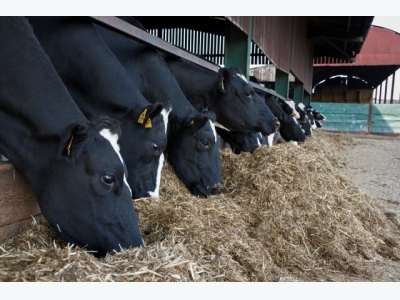How to avoid loss in condition score

Dairy producers are being reminded to pay close attention to nutritional requirements during peak lactation, to avoid losses in body condition score (BCS) of more than 0.5, which could significantly knock fertility.
“Many areas of performance are improving in UK dairy herds, however fertility continues to be an issue and according to industry figures, could be costing the average herd as much as 3.5 pence per litre, says Dr Helen Warren, European technical manager for ruminants at Alltech. “While there are many potential causes for this, inadequate nutrition, in particular energy supply, is known to be a major contributor of reduced fertility,” she explains.
Negative energy balance
In early lactation, a cow’s energy requirement increases substantially and demand is higher than feed intake can support. This causes a negative energy balance, with the cow is forced to mobilise body reserves to maintain production, resulting in loss of body condition. “While cows can withstand a small degree of BCS loss during early lactation, if there’s excessive negative energy balance and cows lose more than 0.5 of body condition score, this can cause a delay in the return of normal oestrus cycling and lower conception rates. If cows aren’t meeting a target BCS of 3.5 at calving down, this can exacerbate the problem, adds Dr Warren.
Too thin at calving
“While cows that are thin at calving will experience reduced fertility, cows that are fat are equally, if not more, problematic. Cows with a BCS above 3.5 tend to have reduced appetites, resulting in increased body fat mobilisation leading to increased risks of fatty liver syndrome and ketosis. Producers should be aiming to calve cows down at BCS 3.5 and no more than 0.5 of a condition score should be lost during early lactation,” Dr Warren explains.
Stabilising the rumen environment
Post calving, nutritional management should focus on maximising feed intake and balancing energy and protein supply, while also remembering to ensure sufficient levels, and optimal form, of minerals. Dr Warren adds that producers should also be careful to avoid digestive upsets when introducing high concentrate diets, which can compromise rumen function and reduce feed digestibility. “Optimising rumen function is really important during this period, because nutrient requirements to meet the demands of production increase significantly. This can be done by adding additives such as live yeast to the diet. This can stabilise the rumen environment by reducing pH variations, helping to mitigate the detrimental effects of a high starch diet while optimising digestibility.”
Có thể bạn quan tâm
Phần mềm

Phối trộn thức ăn chăn nuôi

Pha dung dịch thủy canh

Định mức cho tôm ăn

Phối trộn phân bón NPK

Xác định tỷ lệ tôm sống

Chuyển đổi đơn vị phân bón

Xác định công suất sục khí

Chuyển đổi đơn vị tôm

Tính diện tích nhà kính

Tính thể tích ao hồ



 Good quality water: An essential nutrient for dairy…
Good quality water: An essential nutrient for dairy…  From the field to the cow’s health: Mycotoxin-contaminated…
From the field to the cow’s health: Mycotoxin-contaminated…